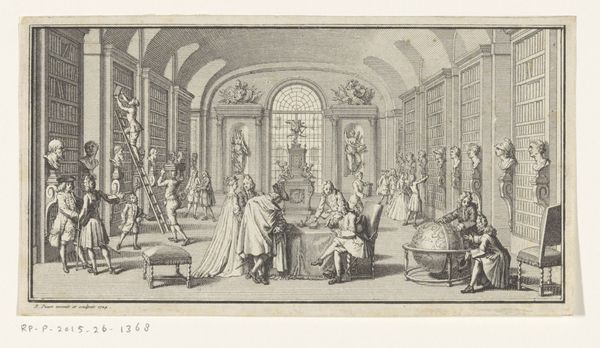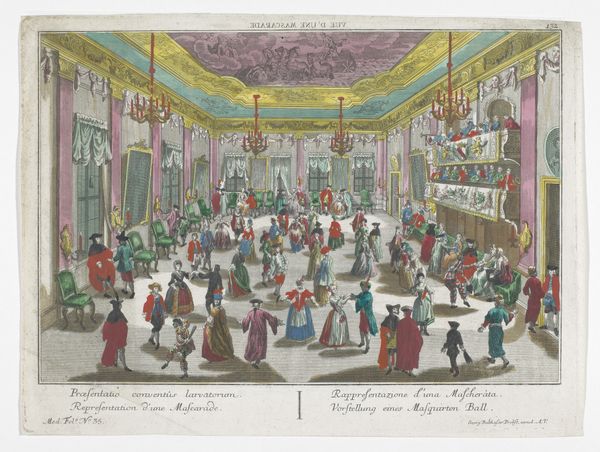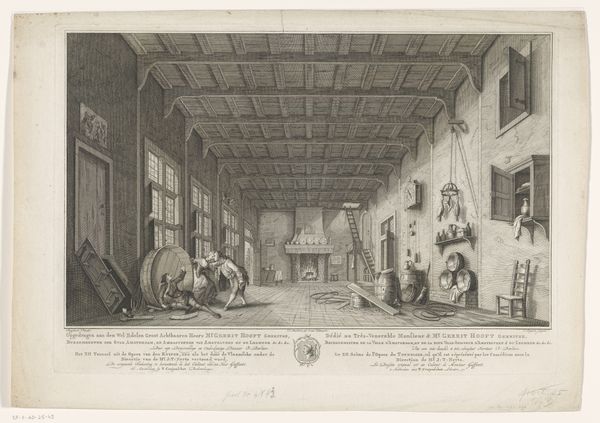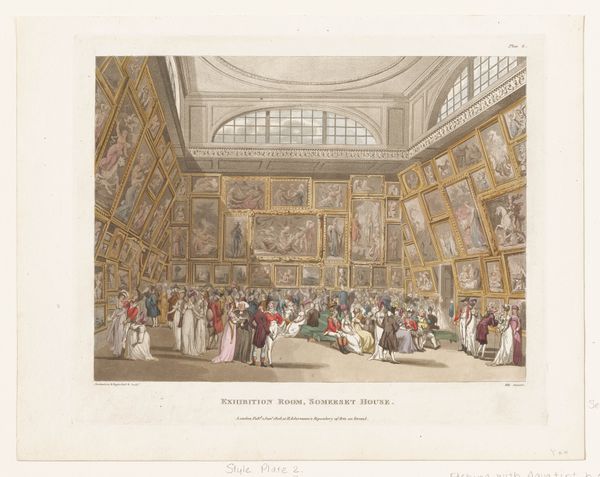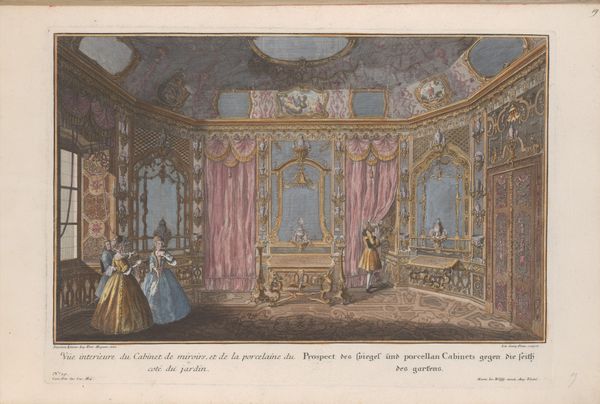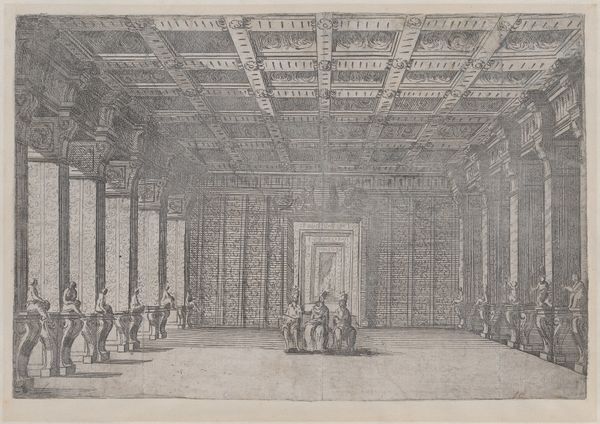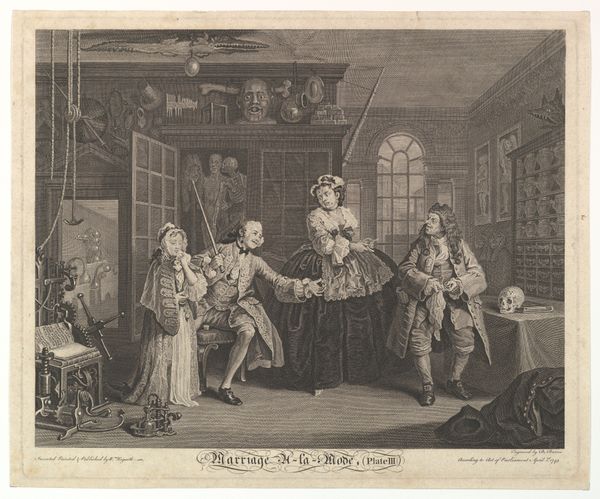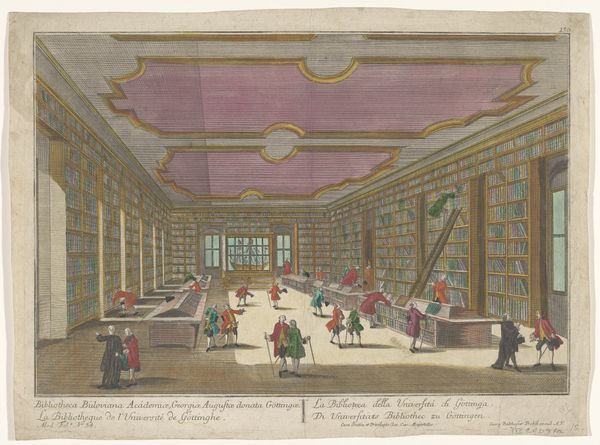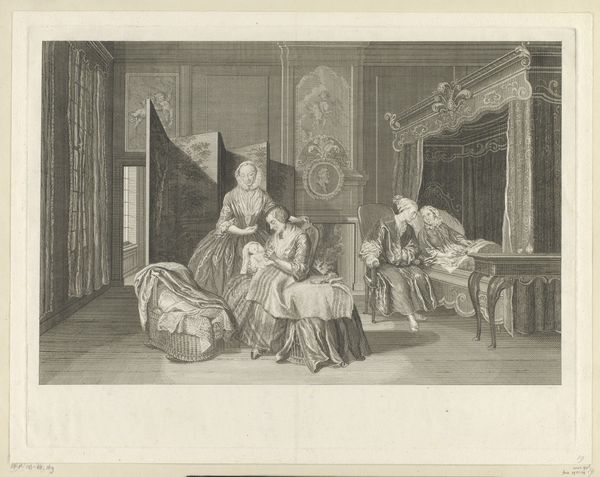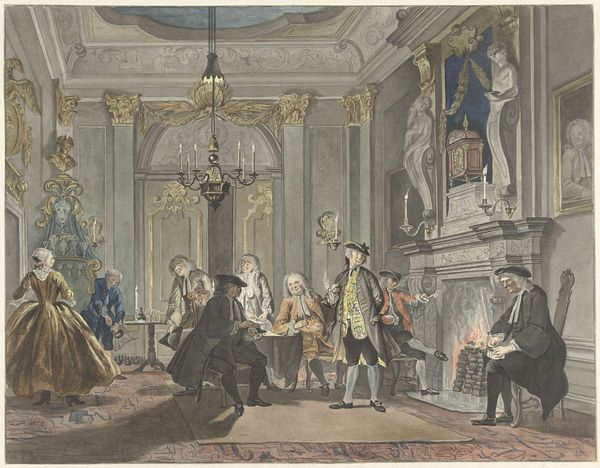
Dimensions: height 292 mm, width 449 mm
Copyright: Rijks Museum: Open Domain
Georg Balthasar Probst made this print, "The Prodigal Son Receiving his Inheritance," in the 18th century. The printmaking process had become well-established by this time, a mode of production sitting between craft and industry. It involves a division of labor, with the master printmaker often relying on assistants. The matrix, likely a copper plate, would have been carefully incised, inked, and then put through a press with a sheet of paper. Look closely, and you can see the fine lines that build up the image, describing the architecture and the figures within it. This kind of printmaking allowed for the relatively easy reproduction of images, and thus the wide distribution of visual ideas. In this case, the image promotes a moral message: be careful what you wish for. The prodigal son gets his payout, but we sense this won't end well. What seems like liberation can quickly turn to ruin. The print itself, though, is a product of a system, not unlike the one it depicts, where labor and capital intersect, raising questions about value, production, and the stories we tell about them.
Comments
No comments
Be the first to comment and join the conversation on the ultimate creative platform.

